To make a beekeeping pollen patty, you will need a few ingredients and materials. Pollen patties are supplemental feed for bees that provide essential nutrients during times when natural pollen sources are scarce. Here's a step-by-step guide to making a beekeeping pollen patty:
Ingredients (Make 18 x A5 Page sized Paddies:
- 4 x Cups - Pollen Supplement (Custom Bee Feed)
- 4 x Cups - Soya Flour
- 4 x Cups - Standard White Granulated Sugar
- 2 x Cups - Brewer's Yeast (optional, provides additional nutrients)
- 2 x Cups - Full Fat Milk Powder
- 8 x Vitamin C Tablets
- 1/2 Cup - Mineral Supplement (Mineral Bee)
- 1/2 Cup - Vegetable Oil (helps aid keep the pattie moist)
- 1:2 (water:sugar) Sugar Syrup (add to above mixture until dough consistency.
Equipment:
- Plastic wrap or wax paper
- Mixing bowl
- Measuring cups
- Mixing spoon or spatula
- Grease-proof Paper / Wax Paper/ Parchment paper or plastic bags for storage
- Ziplock bags or airtight containers for storage
- Strong Mixer (optional)
Instructions:
- Measure the Ingredients: Start by measuring the ingredients. The following measurements can be adjusted based on the size of your bee colony and the number of patties you want to make. The above recipe makes approximately 18 paddies the size of an A5 Sheet of paper.
- Mix the Dry Ingredients: In a mixing bowl, combine the Pollen Supplement, Soya Flour, White Granulated Sugar, Brewer's Yeast, Full Fat Milk Powder and Vitamin C Tablets. Now add the Mineral Supplement and Vegetable Oil. Use a mixing spoon or spatula to thoroughly mix the ingredients together. This step ensures even distribution of the nutrients. The consistency will be rather dry at this point.
NOTE: You may find mixing this in smaller batches easier to handle especially if using a food mixer however be aware that you may need a heavy duty mixer for this process.
- Now add slowly adding little by little the sugar syrup, depending on the moisture content of the dry mixture, you may need to add a little extra liquid to bind the mixture. If the mixture feels dry and crumbly, you can add a small amount of sugar syrup or water. Add the liquid gradually, a little at a time, and mix until you achieve a dough-like consistency.
- Knead the Mixture: Once the ingredients are well mixed, transfer the mixture onto a clean surface and knead it with your hands. Kneading helps to distribute the moisture evenly and create a uniform patty texture.
- Shape the Patties: Divide the dough into smaller portions and shape them into patties. Then place the pattie between two sheets of grease-proof paper (wax paper) and using a rolling pin. Roll it flat as possible, spreading the doughy mixture around but between the two sheets of grease-proof paper.
The size of the patties can vary depending on your beekeeping needs, but we at Buzzbee, tend to get them down to about 5 / 6mm (1/4 inch) in height so that they fit on top of the brood frames but also fit underneath the inner-cover / crown-board.
NOTE: The reason why we place the pollen paddies between two sheet of grease-proof paper is for two reason. - The first it to slow down drying out the pollen paddie by preventing evaporation. This keeping it softer for much longer. As soon as the substance becomes rock hard, the bees won't touch it.
- The second reason, in Australia we have the Small Hive Beetle (SHB) which unfortunately also like pollen paddies. Therefore by reducing access to the places that the food is visible to the SHB, the bees can manage and keep the pests more in control.
- Wrap and Store: Cover the rolled paddies using wax paper. This step, together with the vegetable oil ingredient helps prevent the patties from drying out and allows for easy storage. You can also use parchment paper or plastic bags for wrapping. Place the wrapped patties in ziplock bags or airtight containers for long-term storage.
- Feeding the Pollen Patties: To feed the pollen patties to your bees, simply place them inside the hive. You can use an inner cover or place them directly on top of the frames, close to the brood area. We tend to score one side of the rolled pollen paddie in a hatched patten using a hive tool and then place the scored side directly down on the brood frames. The bee will then eat the delicious cake pollen paddie between the hatched scored area and the edges of the paddie. Be sure to provide adequate ventilation so that excess moisture doesn't build up.
IMPORTANT: Remember, pollen patties should be used as supplemental feed for bees when natural pollen sources are limited. Consult with local beekeeping experts or experienced beekeepers to determine the appropriate timing and quantity of feeding for your specific beekeeping situation.
NOTE: Bee pollen can cause allergic reactions in some individuals. Take necessary precautions, such as wearing gloves and a mask, if you have known allergies.

